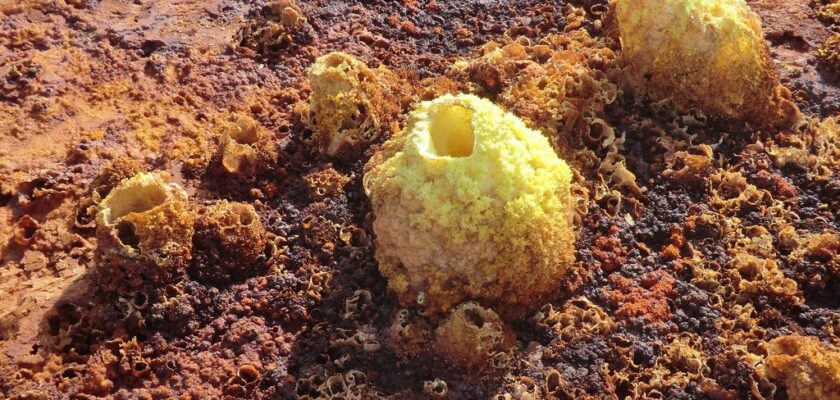Dallol Volcano
Dallol is an active volcanic crater in Ethiopia and one of the most unusual places on our planet. Scientists claim that the terrain near the Dallol volcano, is incredibly similar to the scenery of Jupiter’s satellite Io. Its composition is lava made of sulfur and andesite. In 1926, a violent explosion formed a large lake located 48 meters below sea level. The coloring of the lake is purple-yellow.
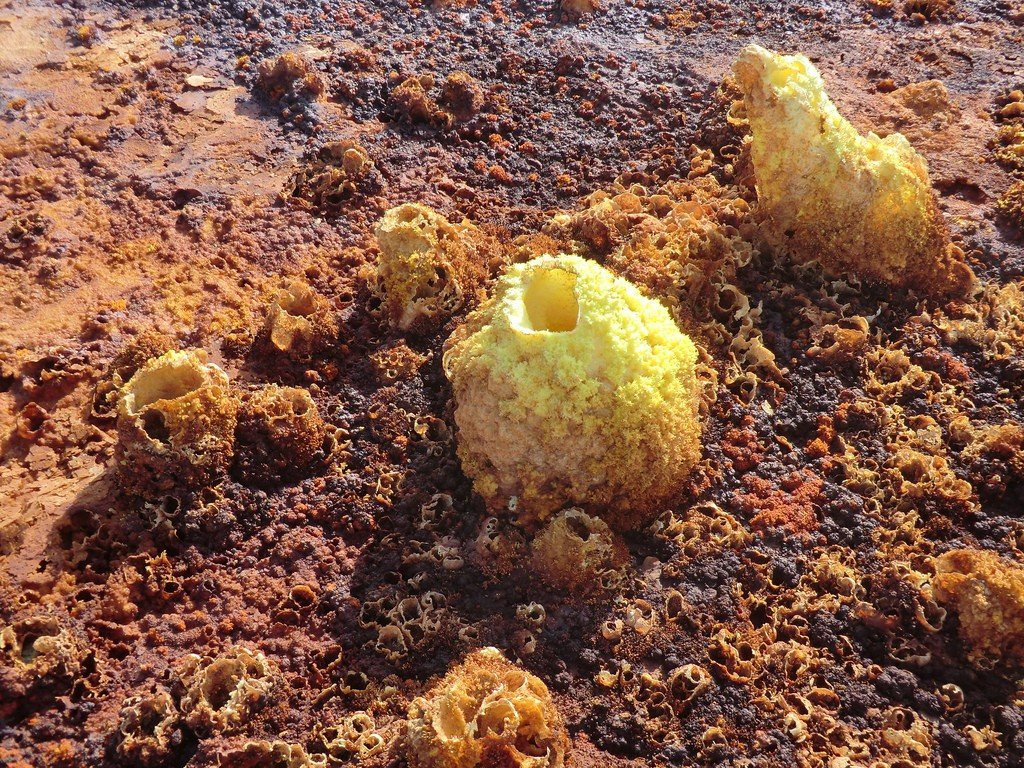
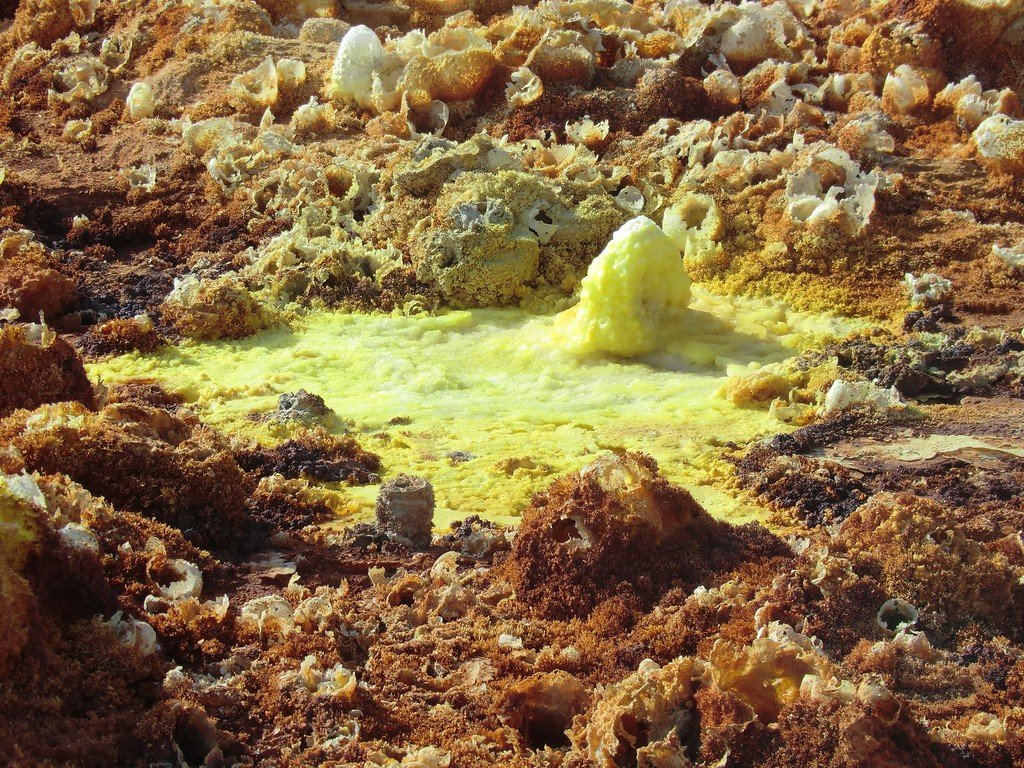
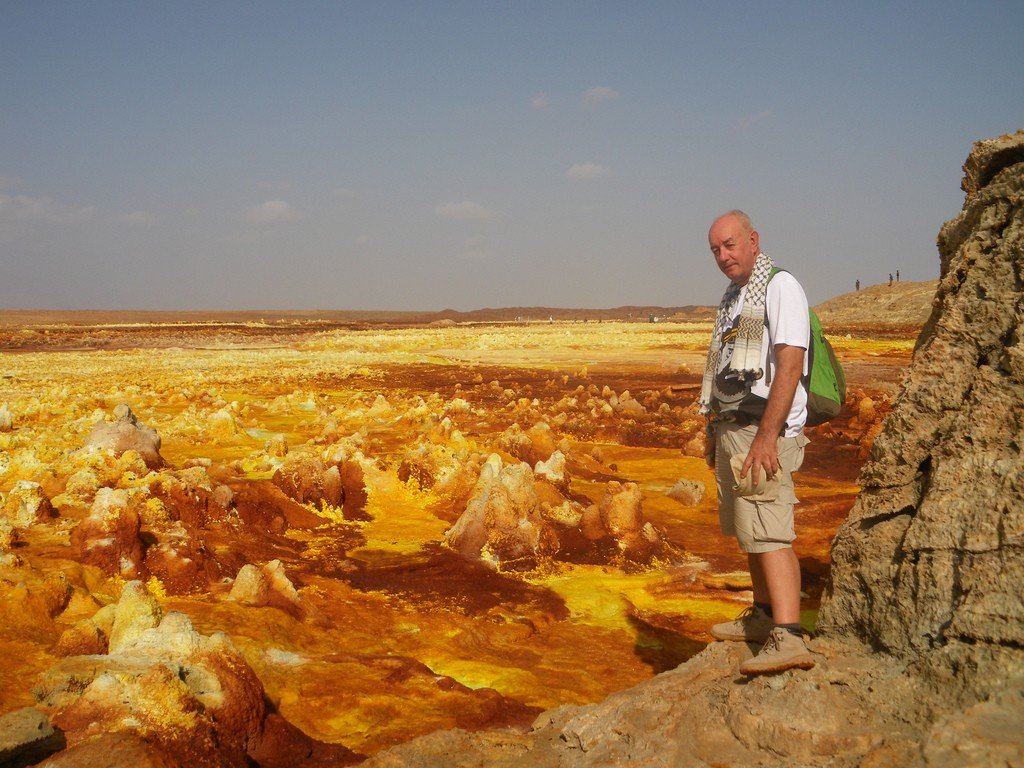
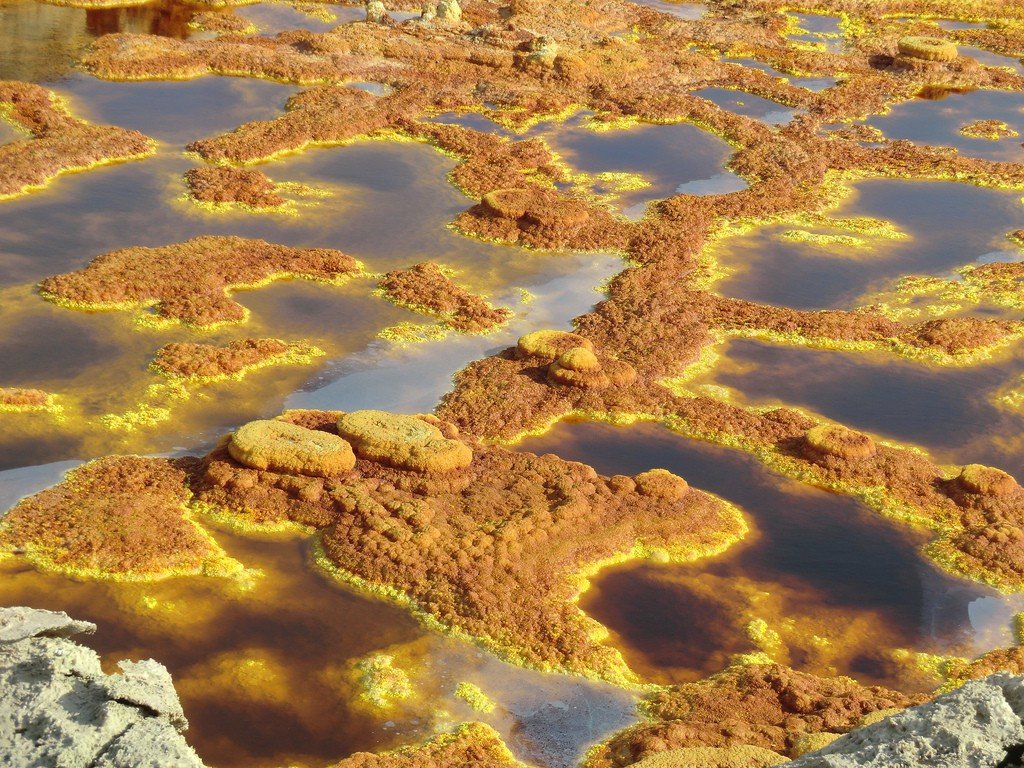
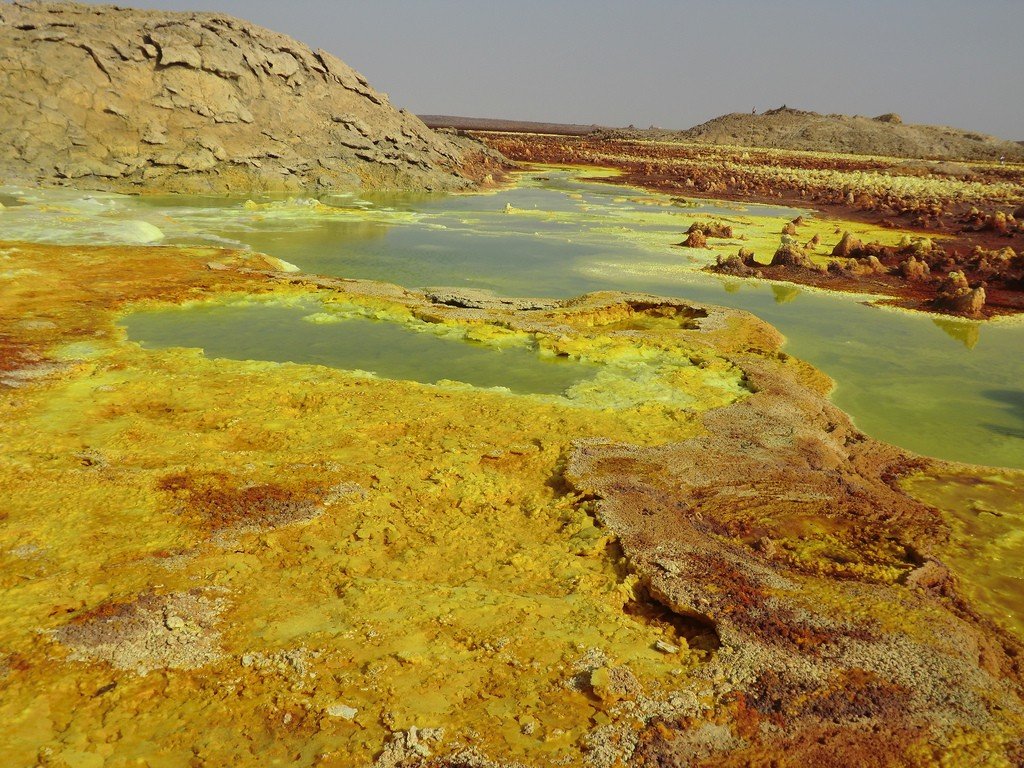
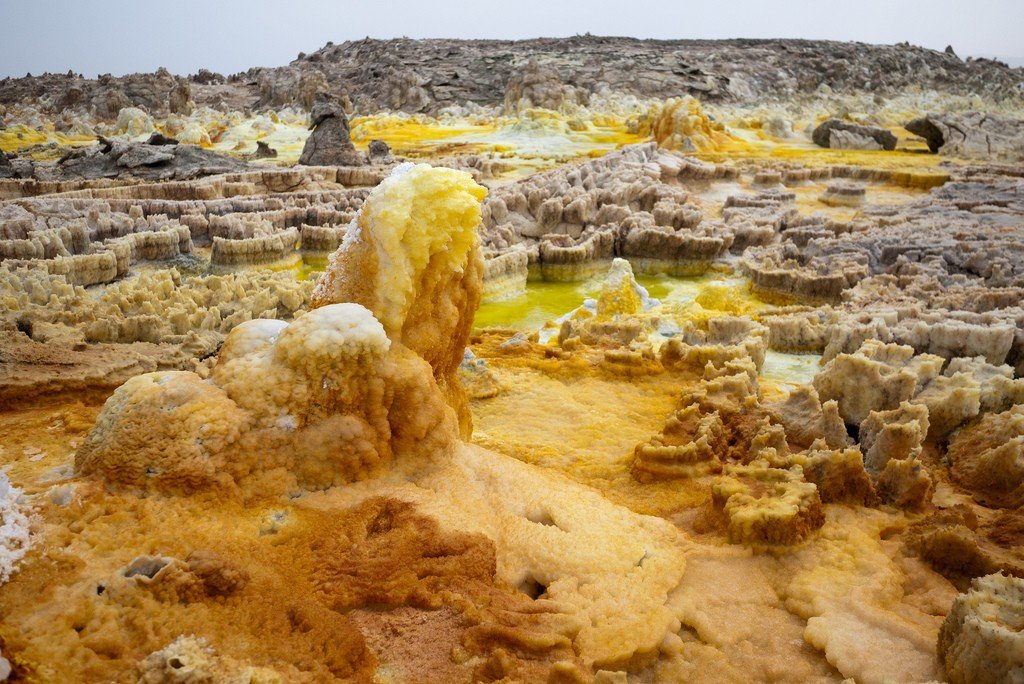
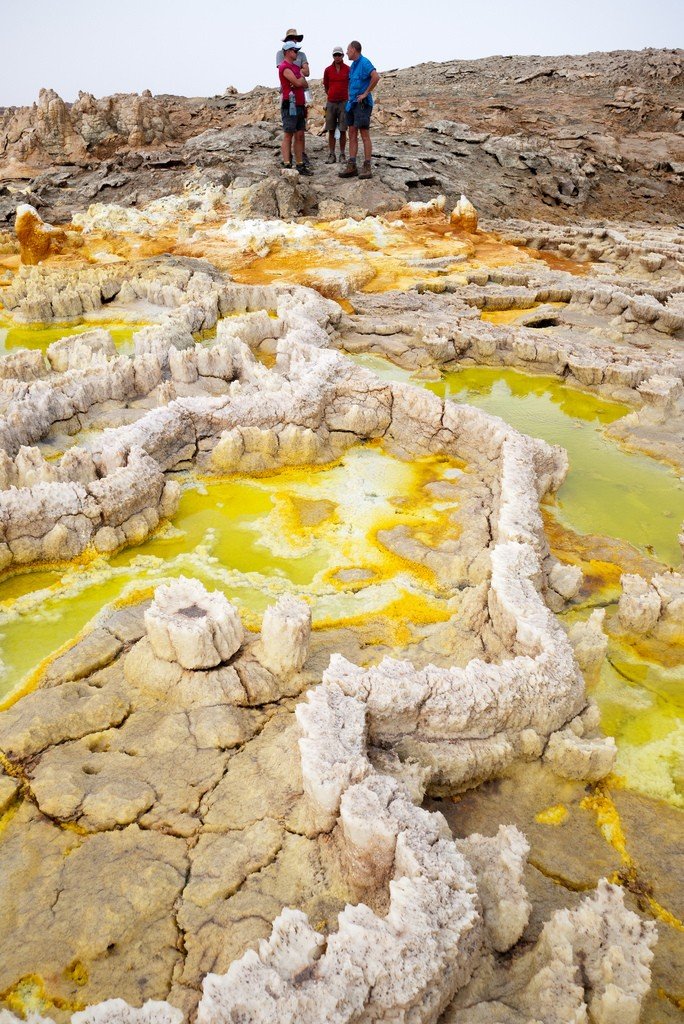
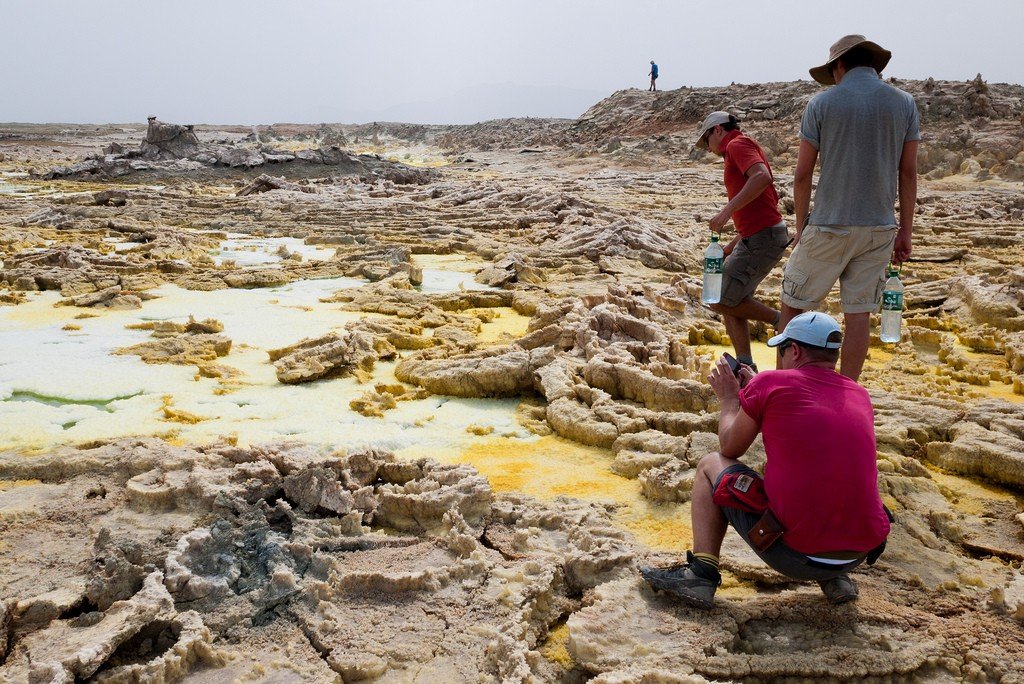
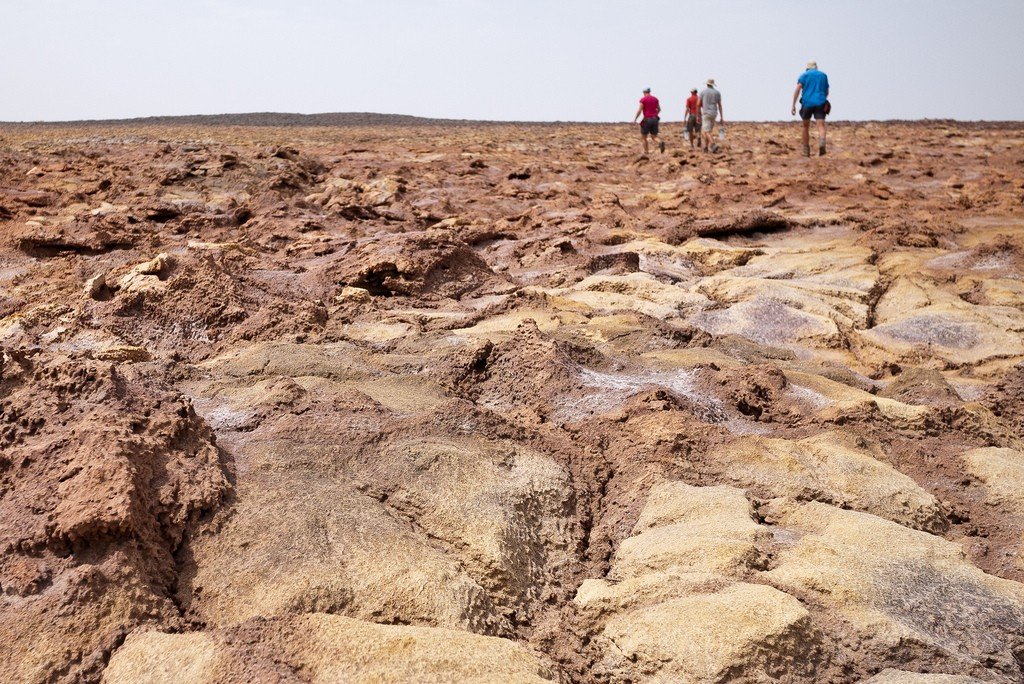
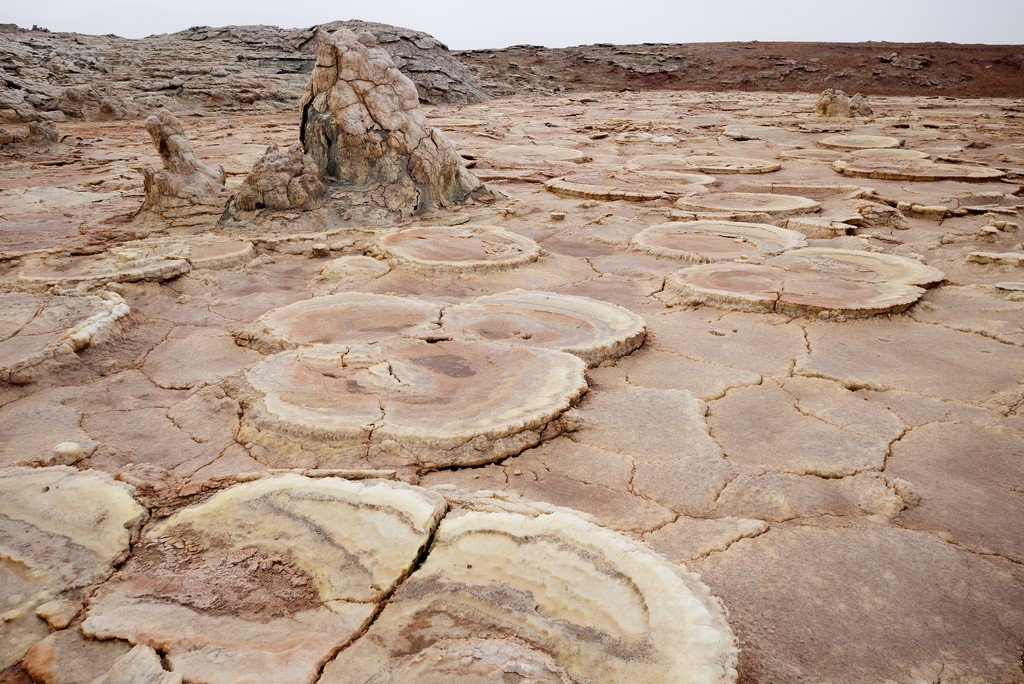
Video: Dallol
Features
The volcano is special because it does not rise above the surrounding area like normal volcanoes, but instead is located as much as 130 meters below sea level. At the same time, its summit is 48 meters lower. The unusual volcano appeared in the Afar region, in the Danakil desert, which, by the way, is considered the most hostile for humans. Here too noticeable volcanic processes, the air is filled with harmful vapors, and the lakes are filled not with clean water, but with acids.
.In addition, the area around Dallol is known for the highest average annual global temperature, which is 34 degrees. It is much hotter in the summer time though. Even at night the temperature can reach 52 degrees.
.
The mention of this volcano in the Book of Enoch is interesting. The manuscript speaks of this area as a hellish abyss from which evil will break out and consume our world. It is believed that this is the place where the end of the world will begin, the world apocalypse, when the gates to the abyss will be opened. The implication here is most likely a volcanic eruption, and the gate is nothing more than a volcano crater that is supposed to spew out lava.
.
However, after the writing of the “Book of Enoch” Dallol has already erupted and, incidentally, more than once, and the end of the world never came. The last eruption of Dallol occurred in 1926. Then the volcano formed a lake, with the “water” colored purple-yellow. The volcano spewed lava, which was mostly composed of andesite and sulfur. Dallol has since fallen asleep and has no intention of waking up again yet.
.Landscape
.Dallol has formed an amazing landscape of truly unearthly beauty. Its crater has a diameter of 1450 meters, and the entire area is teeming with life. Magmatic gases burst out of the ground every now and then, they react with water and contribute to the oxidation process. Small lakes, or rather puddles, have a bright green color, which gives them acid. This is also where salt crystallizes, the white color of which also adds to the charm of the landscape.
.During the rainy season, water entering the Dallol area begins to soak in through small cracks. As it travels deeper, it absorbs minerals. That’s what gives it its unusual coloration. Down to about 4,000 meters, this rainwater encounters magma. This is where it begins to boil and oxidize. And then it pushes outwards, passing through the salt layers and bursting out with a thermal spring of unusual color. The water then begins to evaporate and its minerals crystallize to form cosmic landscapes.
.
The topography of this area is constantly changing, the land here is “alive”. However, to see this landscape will not be easy even with a very great desire. Dallol is located far away from settlements and roads. However, not far away is Dallol settlement, but practically no one lives there, only salt miners work in this area and transport salt layers taken from this area. Even if you get to the Dallol volcano, you will not be able to stay there for a long time. The sweat from the 50-plus degree heat will turn into acid right on your face. The acid fumes make it nearly impossible to breathe, but it’s probably worth it to see what the landscape on Io’s satellite is like after all.
.